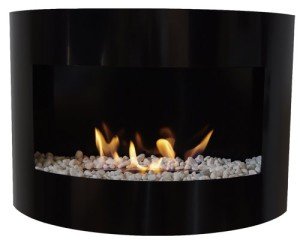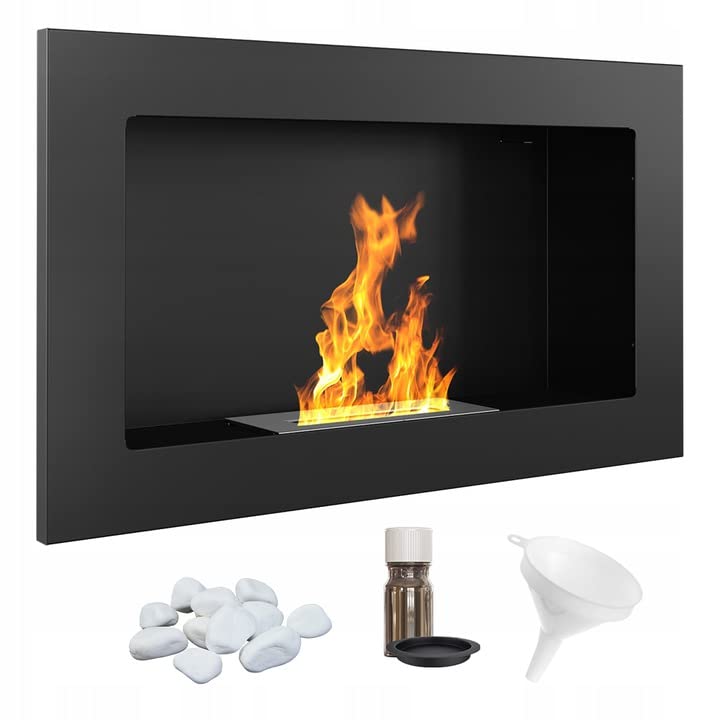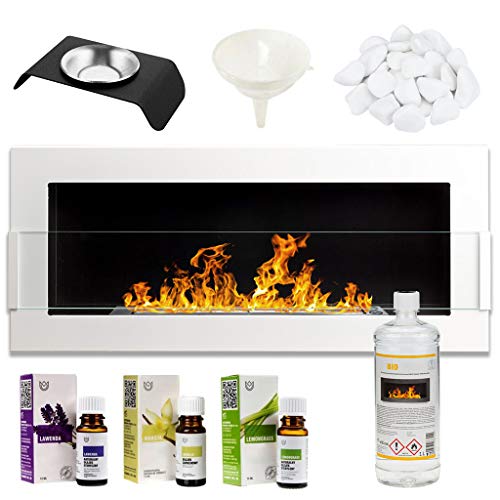In recent years, bioethanol fireplaces have gained popularity as an eco-friendly and versatile alternative to traditional wood-burning stoves and gas fireplaces. Among the various designs available, the 900 x 400 stainless steel model stands out for its sleek aesthetics and efficiency. This guide aims to delve deep into the features, advantages, and other essential aspects of modern bioethanol fireplaces, specifically focusing on the stainless steel variant.
What is a Modern Bioethanol Fireplace?
A modern bioethanol fireplace operates on bioethanol, a renewable source of energy made from fermented plant material. Unlike conventional fireplaces, bioethanol options do not produce smoke, soot, or harmful emissions, making them a safer and cleaner choice for indoor use. The 900 x 400 stainless steel model is an elegant and practical option that fits seamlessly into various home décor styles while offering numerous benefits.
Table 1: Comparison of Different Fireplace Types
| Fireplace Type | Bioethanol | Wood-Burning | Gas |
|---|---|---|---|
| Fuel Source | Renewable bioethanol | Logs and pellets | Natural gas or propane |
| Emissions | None | CO2, smoke | CO2, small emissions |
| Installation | Easy, no vent required | Requires chimney | Requires gas line |
| Environmental Impact | Low | High | Moderate |
| Heat Output | Moderate | High | High |
Key Features of the 900 x 400 Stainless Steel Bioethanol Fireplace
1. Aesthetic Appeal
The sleek and modern design of stainless steel offers a contemporary look that enhances the visual appeal of any space. The smooth surface can easily match various interior designs, from minimalist to industrial aesthetics.
2. Portability
Most stainless steel bioethanol fireplaces are lightweight and portable, allowing homeowners to reposition them as needed. This flexibility is particularly advantageous for those seeking to change the ambiance of a room without significant renovations.
3. Easy Installation
These fireplaces do not require a chimney or extensive installation processes. Users can set them up quickly by following basic guidelines, making them an appealing choice for renters or those living in apartments.
4. Clean Burning
Bioethanol burns cleanly and produces very few emissions. The fire produced is ventless, so there is no need for additional exhaust systems, and it is safe for indoor use. The lack of smoke means that there is no need for complicated cleaning regimes associated with traditional wood-burning fireplaces.
5. Eco-Friendly
As bioethanol is derived from renewable sources, using this type of fireplace contributes to a more sustainable lifestyle. Its carbon-neutral status ensures that the combustion process does not add to the atmospheric CO2 levels.
Advantages of Using a Bioethanol Fireplace
1. Cost-Effective
While the initial investment in a stainless steel bioethanol fireplace may be higher than other types, the lack of installation costs, chimney requirements, and lower ongoing fuel costs make it an economically viable option in the long term.
2. Versatility
Bioethanol fireplaces are suitable for a wide range of environments, including residential homes, offices, and other commercial spaces. Their modern design allows them to blend seamlessly into different settings.
3. Efficient Heating
Though bioethanol fireplaces are not designed to be primary heating sources, they can effectively warm a room with ambient heat when used thoughtfully. Utilizing this type of fireplace in conjunction with other heating sources can enhance overall comfort without driving up energy costs.
4. Minimal Maintenance
To maintain the appearance and performance of a stainless steel bioethanol fireplace, only minimal cleaning is required. A simple wipe with a soft cloth is usually sufficient to keep it looking pristine.
How to Use a Bioethanol Fireplace Safely
To ensure safety while enjoying the warmth of a bioethanol fireplace, consider the following guidelines:
- Read the Manufacturer’s Manual: Each fireplace may have specific requirements and guidelines for safe usage.
- Keep Flammable Materials Away: Maintain a safe distance between the fireplace and any combustible materials, such as furniture or décor.
- Use Appropriate Fuel: Only use bioethanol fuel recommended by the manufacturer to avoid harmful reactions or malfunctions.
- Do Not Overfill the Fuel Source: Fill the burner according to guidelines, as overfilling can lead to spills that could cause flames to escape.
- Ensure Adequate Ventilation: While bioethanol produces little to no emissions, maintaining good air circulation is always wise.
Frequently Asked Questions (FAQs)
Q1: What is the average burn time for bioethanol fuel?
A1: The burn time for bioethanol fuel can vary based on the model and fuel quantity but typically ranges from 3 to 6 hours per refill.
Q2: Can a bioethanol fireplace be used outdoors?
A2: Yes, bioethanol fireplaces are suitable for outdoor use. However, proper precautions should be taken to protect the unit from adverse weather conditions.
Q3: Is it safe to leave a bioethanol fireplace unattended?
A3: It is generally not safe to leave a bioethanol fireplace unattended during operation. Always switch it off when leaving the room or going to bed.
Q4: How do I clean a stainless steel bioethanol fireplace?
A4: Cleaning involves wiping the stainless steel surface with a soft cloth. Avoid abrasive materials that could scratch the finish.
The 900 x 400 stainless steel bioethanol fireplace serves as a stunning focal point, enhancing the ambiance of any space while promoting an eco-friendly lifestyle. With its easy installation, minimal maintenance, and stylish design, it represents a modern alternative to traditional heating sources. Providing both aesthetics and functionality, it meets the demands of the contemporary homeowner, blending convenience with environmental consciousness.






